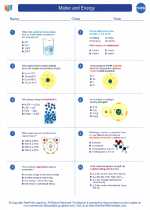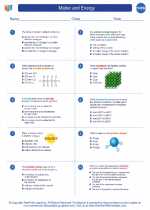Rubber
Rubber is a polymer, which is a large molecule composed of repeating structural units. It is a natural substance that is harvested from the rubber tree, Hevea brasiliensis, as latex. Synthetic rubber is also produced through the polymerization of monomers.
Structure of Rubber
The basic structure of rubber is a long chain of carbon atoms, with two hydrogen atoms attached to each carbon. This is known as a polyisoprene chain. The double bonds in the polyisoprene chain give rubber its elasticity.
Properties of Rubber
- Elasticity: Rubber is known for its high elasticity, allowing it to return to its original shape after being stretched or compressed.
- Insulation: Rubber is a good insulator of both electricity and heat.
- Waterproof: Rubber is impermeable to water and is often used in waterproofing materials.
- Resilience: Rubber can withstand repeated stress and still retain its original shape and properties.
Uses of Rubber
Rubber has a wide range of applications in various industries, including:
- Automotive industry: tires, belts, hoses
- Medical industry: gloves, tubing, seals
- Construction industry: seals, gaskets, insulation
- Consumer goods: footwear, toys, erasers
- Industrial machinery: conveyor belts, shock absorbers
Study Guide
When studying the topic of rubber, consider the following key points:
- Understand the structure of rubber at the molecular level, including the arrangement of carbon and hydrogen atoms in the polyisoprene chain.
- Learn about the properties of rubber, such as elasticity, insulation, waterproofing, and resilience, and how these properties make it suitable for various applications.
- Explore the differences between natural rubber and synthetic rubber, including their production processes and uses.
- Examine the environmental impact of rubber production and the efforts to develop sustainable alternatives.
- Research the historical and cultural significance of rubber, including its role in the development of industries and its impact on global trade.
By understanding the structure, properties, uses, and impact of rubber, you can gain a comprehensive understanding of this important material.
.◂Chemistry Worksheets and Study Guides High School. Matter and Energy

 Worksheet/Answer key
Worksheet/Answer key
 Worksheet/Answer key
Worksheet/Answer key
